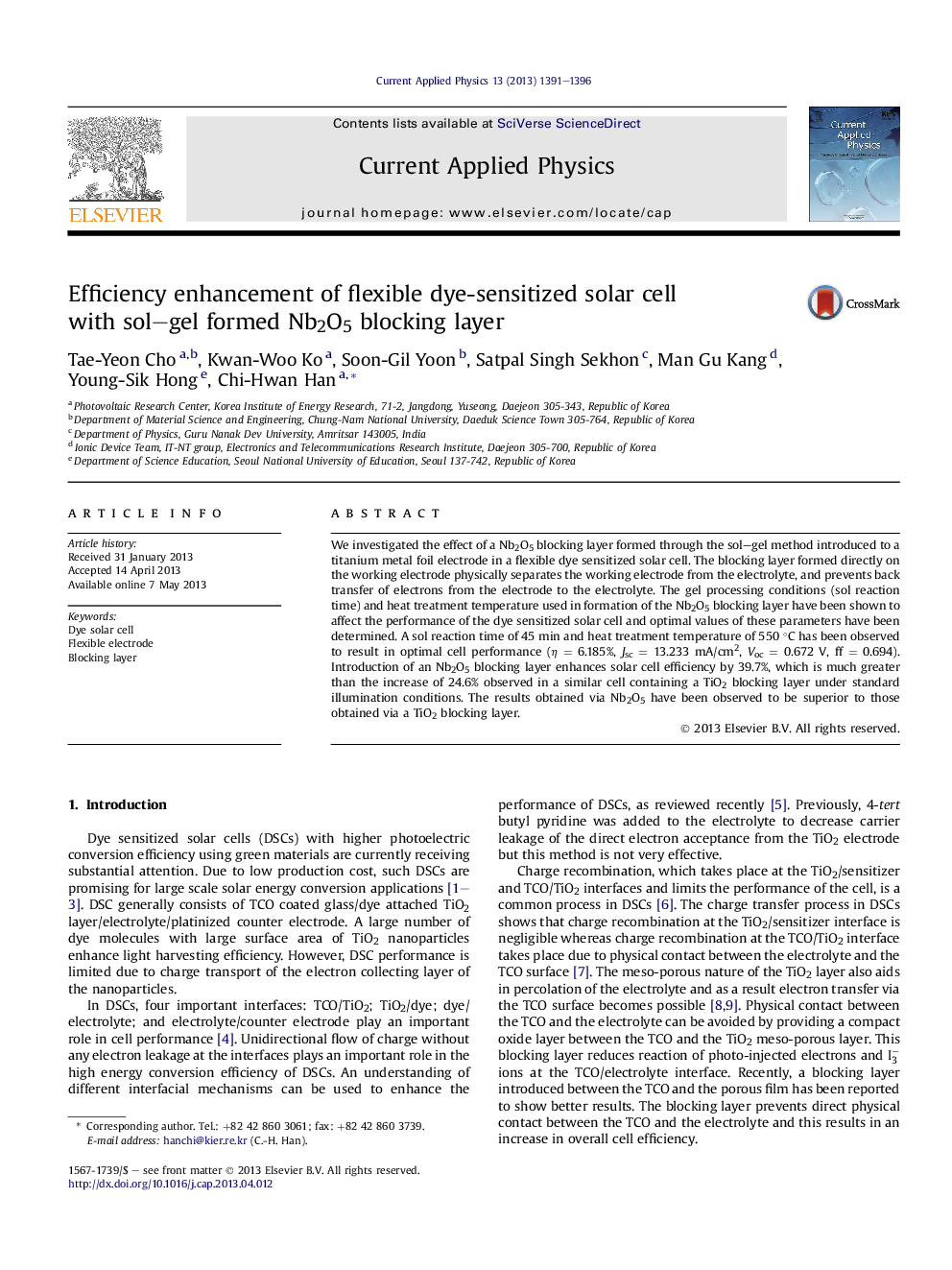| Article ID | Journal | Published Year | Pages | File Type |
|---|---|---|---|---|
| 1786454 | Current Applied Physics | 2013 | 6 Pages |
•We formed blocking layers of TiO2 or Nb2O5 through a sol–gel method.•The blocking layers were coated on a Ti metal electrodes in a flexible DSSC.•We compared both of the blocking layers and optimized the forming condition.•The sol reaction time and heat treatment temperature affect the cell efficiency.•The Nb2O5 of 45 min and 550 °C showed the best cell performance.
We investigated the effect of a Nb2O5 blocking layer formed through the sol–gel method introduced to a titanium metal foil electrode in a flexible dye sensitized solar cell. The blocking layer formed directly on the working electrode physically separates the working electrode from the electrolyte, and prevents back transfer of electrons from the electrode to the electrolyte. The gel processing conditions (sol reaction time) and heat treatment temperature used in formation of the Nb2O5 blocking layer have been shown to affect the performance of the dye sensitized solar cell and optimal values of these parameters have been determined. A sol reaction time of 45 min and heat treatment temperature of 550 °C has been observed to result in optimal cell performance (η = 6.185%, Jsc = 13.233 mA/cm2, Voc = 0.672 V, ff = 0.694). Introduction of an Nb2O5 blocking layer enhances solar cell efficiency by 39.7%, which is much greater than the increase of 24.6% observed in a similar cell containing a TiO2 blocking layer under standard illumination conditions. The results obtained via Nb2O5 have been observed to be superior to those obtained via a TiO2 blocking layer.
